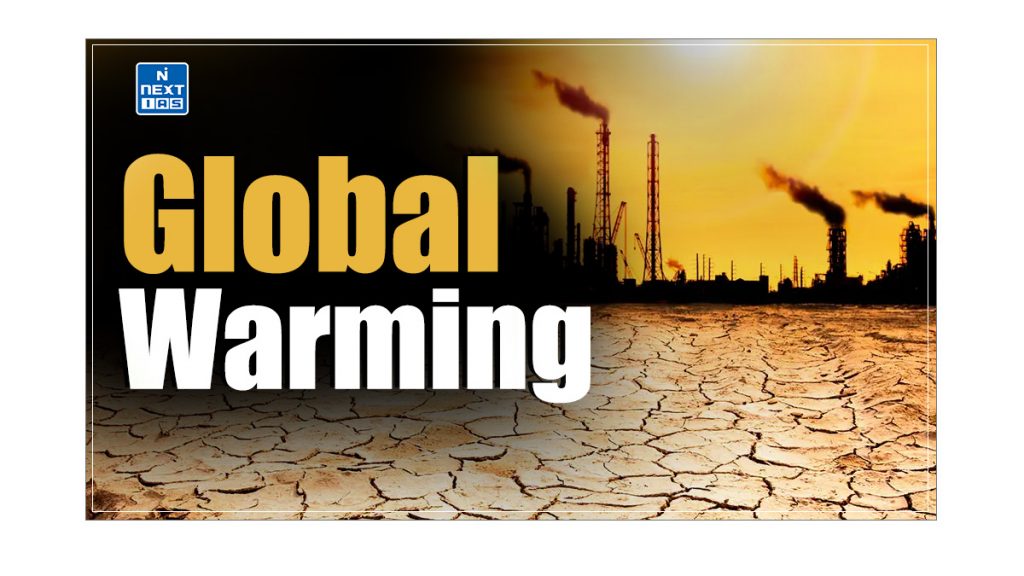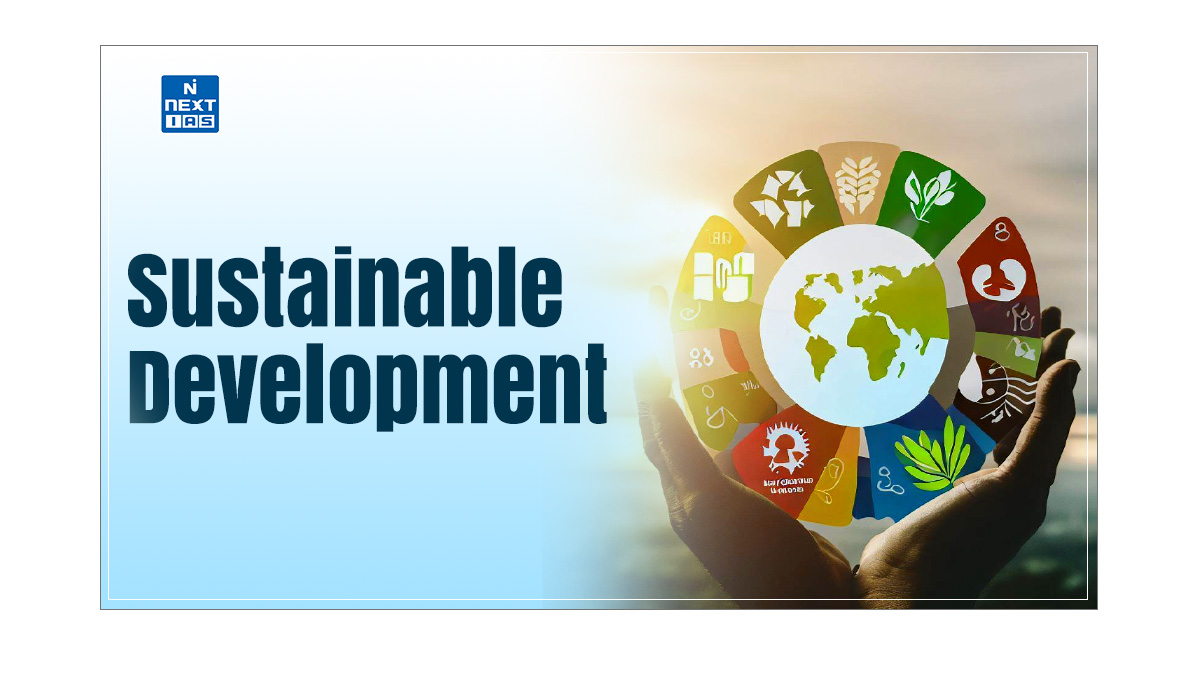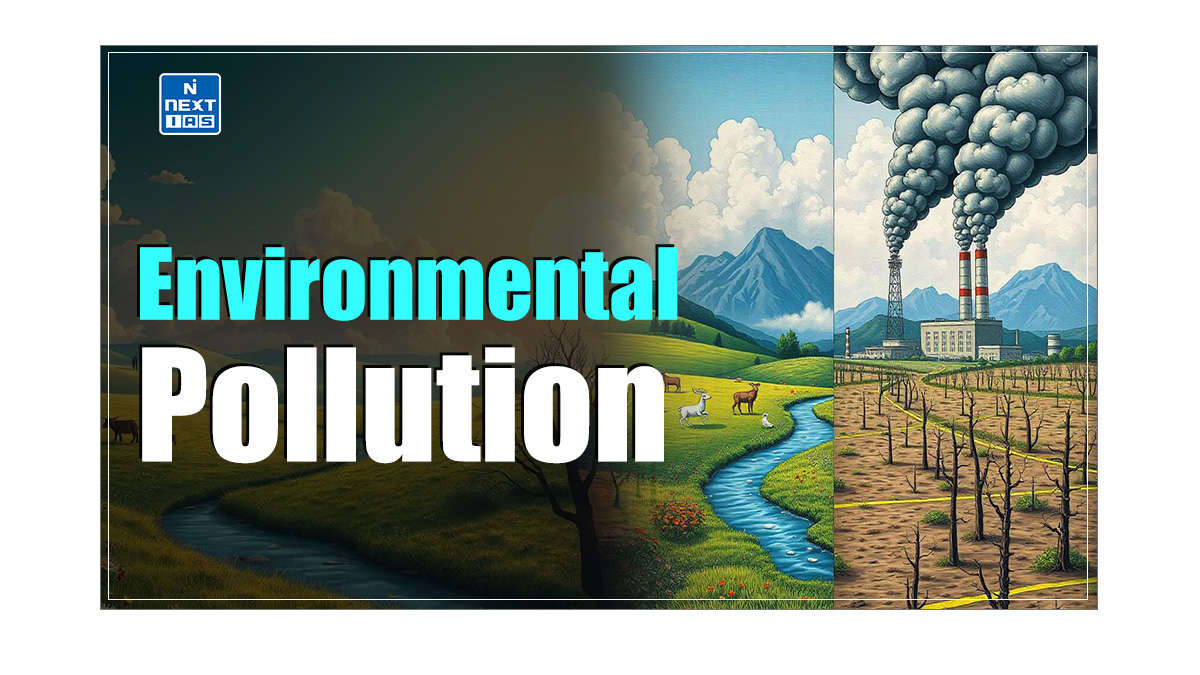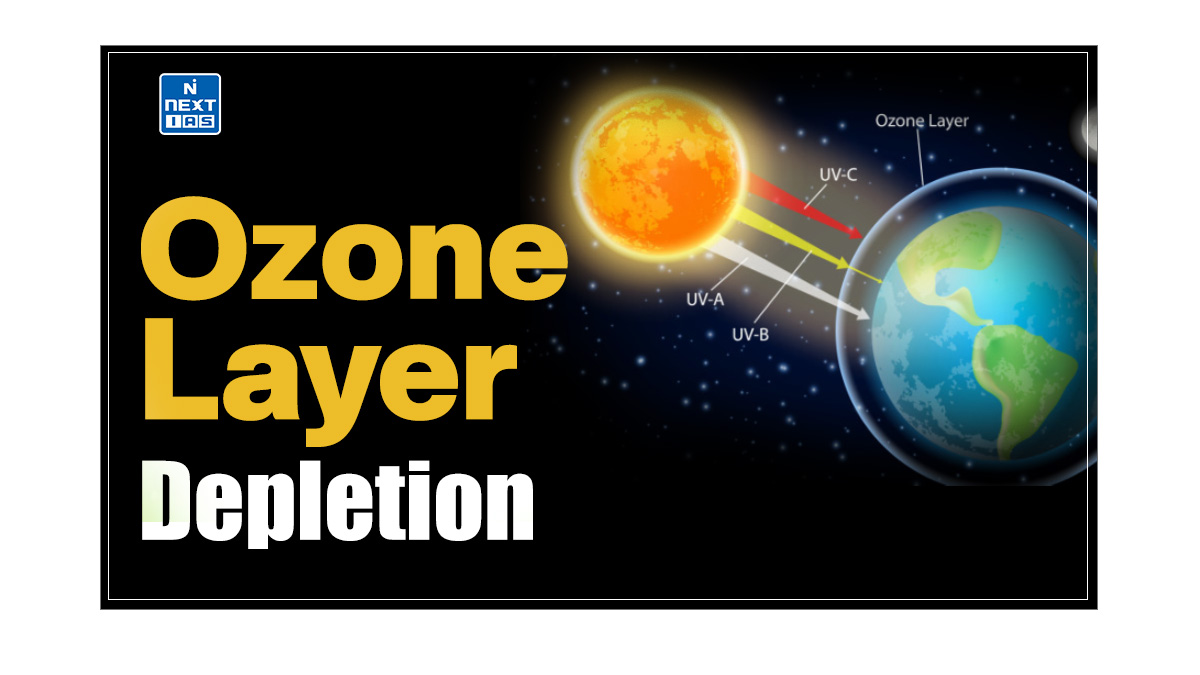
Global Warming is a pressing environmental issue characterised by the rise in Earth’s average temperature, primarily driven by human activities such as fossil fuel combustion, deforestation, and industrial processes. This phenomenon leads to significant climate changes and affects ecosystems, human health, and global economies. This article aims to study in detail the factors contributing to global warming, its far-reaching consequences, and the strategies we can implement to combat this critical challenge for our planet’s future.
About Global Warming
- Global warming refers to the increase in the Earth’s average temperature, primarily due to human activities.
- This phenomenon, commonly linked with climate change, results from the excessive emission of greenhouse gases (GHGs) into the atmosphere.
- While global warming can have multiple causes, human interference—such as burning fossil fuels, deforestation, and industrial activities—is the most significant factor.
Causes of Global Warming
Global warming is driven by natural and anthropogenic (human-induced) causes. While some factors are part of Earth’s natural climate cycles, human activities have accelerated the warming process in recent centuries, causing significant environmental impacts.
Natural Causes of Global Warming
- Solar Radiation Variations: The Sun’s energy output fluctuates over time, which can influence Earth’s climate.
- Increased solar activity, though rare, can slightly raise global temperatures.
- Volcanic Activity: Large volcanic eruptions can inject significant amounts of gases and ash into the atmosphere.
- Some eruptions release carbon dioxide (CO2) and aerosols, affecting the global temperature balance.
- While short-term cooling can occur from the aerosols, CO2 contributes to warming in the longer term.
- Earth’s Orbital Changes: The Earth’s orbit and tilt vary in cycles, known as Milankovitch cycles.
- These changes can influence the climate, leading to natural warming or cooling over thousands of years.
Anthropogenic (Human-Induced) Causes of Global Warming
While natural factors contribute to climate variability, human activities are the primary drivers of the accelerated global warming seen today. These activities release large amounts of greenhouse gases (GHGs) that trap heat in the Earth’s atmosphere, leading to a rise in global temperatures.
- Burning of Fossil Fuels: Fossil fuels such as coal, oil, and natural gas are burned for electricity generation, transportation, and industrial production.
- This process releases significant amounts of carbon dioxide (CO2), the primary greenhouse gas responsible for global warming.
- Fossil fuel combustion also contributes to methane (CH4) emissions, particularly in the extraction and transportation of natural gas.
- Deforestation: Cutting down forests for agriculture, urbanization, and timber reduces the Earth’s capacity to absorb CO2, as trees are critical in carbon sequestration.
- Forests act as carbon sinks, and their removal increases the concentration of CO2 in the atmosphere, exacerbating global warming.
- Industrial Activities: Industrial processes, such as manufacturing, cement production, and mining, contribute to significant emissions of CO2 and other GHGs.
- Some industries also release more potent greenhouse gases like hydrofluorocarbons (HFCs) and sulphur hexafluoride (SF6), which have much higher global warming potential than CO2.
- Agriculture: Agriculture, especially livestock farming, is a major source of methane (CH4) emissions.
- Methane is produced during the digestion process in ruminant animals such as cows and sheep.
- Nitrous oxide (N2O) is another significant GHG emitted from agricultural activities, particularly through the use of synthetic fertilizers and the cultivation of nitrogen-fixing crops.
Global Warming Potential (GWP)
- Global Warming Potential (GWP) is a tool developed to compare the greenhouse effect caused by different gases.
- Global Warming Potential (GWP) measures the energy that 1 ton of a particular gas will absorb over a specific period, relative to the emissions of 1 ton of carbon dioxide (CO2).
- The standard time frame used for Global Warming Potential (GWP) calculations is usually 100 years.
- This metric is crucial for scientists and policymakers as Global Warming Potential (GWP) helps gauge the impact of various gases on global warming, guiding efforts to curb harmful emissions.
Comparison of Greenhouse Gases
| Greenhouse Gas (GHG) | Atmospheric Lifetime (Years) | Global Warming Potential (GWP) | Primary Current Sources |
|---|---|---|---|
| Carbon Dioxide (CO2) | 50-200 | 1 | Fossil fuel use, land use, cement |
| Methane (CH4) | 12 + 3 | 21 | Fossil fuel use, agriculture |
| Nitrous Oxide (N2O) | 120 | 320 | Agriculture, one third is anthropogenic |
| Hydroflourocarbons (HFCs) | 1.5 to 209 | 150 – 11,700 | Alternative to Ozone Depleting Substances (ODS) |
| Perflourocarbons | 2600 to 50000 | 6500 – 9200 | Aluminium production, semiconductor manufacturing |
| Sulphur Hexafluoride (SF6) | 3200 | 23,900 | Electric Power Transmission, Magnesium Industry |
Effects of Global Warming
Global warming, driven primarily by human-induced activities, is resulting in profound changes to the Earth’s environment, ecosystems, socio-economic structures, and human health. These impacts are interconnected, and the repercussions are felt globally, with some regions more vulnerable than others.
Environmental Effects
- Rising Global Temperatures: One of the most direct impacts of global warming is the increase in Earth’s average temperature.
- Global temperatures have already risen by approximately 1.1°C since pre-industrial times, and projections suggest further increases depending on the levels of greenhouse gas emissions.
- Warmer temperatures affect weather patterns, water resources, and seasonal cycles, causing disruptions in ecosystems and human life.
- Melting Ice Caps, Glaciers, and Rising Sea Levels: Rising temperatures have led to the accelerated melting of polar ice caps and glaciers, particularly in the Arctic and Antarctic regions.
- As glaciers melt, the freshwater flows into the ocean, leading to rising sea levels. Current estimates suggest sea levels could rise between 0.6 to 1.1 meters by 2100.
- Coastal regions, including low-lying islands and cities, are particularly vulnerable to flooding, leading to the displacement of millions of people. This also threatens the loss of freshwater supplies as saltwater intrudes into coastal aquifers.
- Increased Frequency of Extreme Weather Events: Global warming is linked to an increase in the frequency and intensity of extreme weather events such as hurricanes, floods, droughts, and heatwaves.
- Warmer ocean temperatures fuel more powerful storms, while shifting weather patterns can lead to prolonged droughts in some areas and excessive rainfall in others.
- Flooding can devastate infrastructure and agriculture, while droughts lead to water scarcity and loss of crops, further contributing to food insecurity.
Effects on Ecosystems
- Changes in Biodiversity, Habitats, and Species Extinction: Global warming disrupts ecosystems and habitats, forcing species to migrate or adapt to changing conditions. However, many species cannot cope with the rapid pace of climate change.
- Coral reefs, for example, are highly sensitive to changes in sea temperature. The warming of oceans is causing widespread coral bleaching, which threatens marine biodiversity.
- Terrestrial species may lose their natural habitats due to rising temperatures, deforestation, and changes in precipitation patterns, leading to species extinction. Polar bears, amphibians, and certain bird species are already at risk.
- Impact on Vegetation and Agriculture: Changes in temperature and precipitation patterns affect the growth cycles of plants and crops.
- Shifts in growing seasons can disrupt food production and threaten food security in regions dependent on agriculture.
- Crops sensitive to temperature changes, such as wheat, maize, and rice, are particularly vulnerable, and extreme weather events can further damage yields.
- Forest ecosystems are also at risk, with certain tree species struggling to adapt to the rapidly warming environment, resulting in loss of forests and biodiversity.
Socio-Economic Effects
- Effects on Food Security, Poverty, and Malnutrition: As global warming affects agricultural productivity, many regions face the risk of food insecurity, especially in developing countries where agriculture forms the backbone of the economy.
- Droughts and other extreme weather events can reduce crop yields, leading to higher food prices and shortages, exacerbating poverty and malnutrition.
- Communities already struggling with poverty are the most vulnerable, as they lack the resources and infrastructure to mitigate the impacts of climate change.
- Economic Repercussions for Vulnerable Regions: Developing countries and low-income regions are disproportionately affected by global warming due to limited resources for adaptation.
- Sectors such as agriculture, fishing, and tourism face significant economic challenges as they depend on stable climates and ecosystems.
- Climate-induced disasters can lead to severe economic losses, damage infrastructure, and strain national budgets, particularly in nations that rely on natural resources.
Human Health Effects
- Spread of Diseases: Rising temperatures and changing precipitation patterns can expand the geographic range of vector-borne diseases such as malaria, dengue, and Zika virus, as the insects that transmit these diseases thrive in warmer climates.
- Warmer temperatures can also affect water quality, increasing the risk of waterborne diseases such as cholera.
- Heat-Related Illnesses: Heatwaves are becoming more frequent and severe, causing an increase in heat-related illnesses such as heatstroke, dehydration, and cardiovascular stress.
- Vulnerable populations, such as the elderly, children, and people with pre-existing health conditions, are at higher risk of heat-related deaths during extreme temperature events.
- Urban areas, with their concentrated populations and heat-retaining infrastructure, are particularly susceptible to the effects of urban heat islands.
Advantages and Disadvantages of Global Warming
- Global warming presents both advantages and disadvantages that impact the environment and society.
- On the positive side, rising temperatures can extend growing seasons in certain regions, potentially increasing agricultural productivity and enabling the cultivation of new crops in previously barren areas and causing global warming.
- Also, melting ice in polar regions may open new shipping routes, reduce transportation costs, and foster economic opportunities.
- However, the disadvantages of global warming are far more severe and far-reaching.
- The increase in global temperatures contributes to extreme weather events, rising sea levels, and loss of biodiversity, which threaten ecosystems and human settlements.
- Communities are at risk from flooding, droughts, and food insecurity, while heat waves and the spread of vector-borne diseases raise public health concerns.
- Ultimately, while there may be localised benefits, the overarching effects of global warming pose significant challenges that could outweigh any potential advantages.
Solutions to Combat Global Warming
- Addressing global warming requires a combination of mitigation strategies to reduce greenhouse gas (GHG) emissions and adaptation strategies to cope with the inevitable impacts of climate change.
- While global cooperation is essential, individual actions at the local, national, and international levels also play a crucial role.
Reducing GHG Emissions
- Renewable Energy: Transitioning from fossil fuels to renewable energy sources such as solar, wind, and hydropower is one of the most effective ways to reduce GHG emissions.
- Renewable energy not only generates clean electricity but also decreases the reliance on coal, oil, and gas, which are the primary contributors to global warming.
- Countries like Germany, Denmark, and China are leading the way in solar and wind energy, while India’s solar energy initiative is gaining momentum.
- Energy Efficiency: Improving energy efficiency across all sectors — from industrial processes to buildings and transportation — can significantly reduce emissions.
- For instance, adopting energy-efficient appliances, better insulation in buildings, and promoting public transport over private vehicles are important steps.
- Electric vehicles (EVs), which are powered by renewable energy, can drastically cut down emissions from the transport sector.
- Carbon Capture Technologies: Developing and deploying carbon capture and storage (CCS) technologies can help capture CO₂ emissions from large-scale industrial sources like power plants and factories.
- These technologies prevent the release of CO₂ into the atmosphere by storing it underground or repurposing it for other uses.
- Pilot projects in Norway and Canada are demonstrating the potential of CCS to reduce emissions from industries such as oil, gas, and cement manufacturing.
Promoting Sustainable Agriculture and Reforestation
- Sustainable Agriculture: Agriculture contributes significantly to GHG emissions, particularly from methane (CH₄) and nitrous oxide (N₂O).
- Sustainable practices such as crop rotation, agroforestry, organic farming, and water conservation can help reduce the carbon footprint of agriculture.
- Encouraging the use of biofertilizers, precision agriculture techniques, and low-emission livestock farming can further minimize agricultural emissions.
- Reforestation and Afforestation: Trees act as carbon sinks, absorbing CO₂ from the atmosphere and reducing global warming.
- Large-scale reforestation projects aim to restore degraded forests, while afforestation initiatives plant trees in areas that have not previously been forested.
- Programs like the Billion Tree Tsunami in Pakistan and India’s Green India Mission are examples of national efforts to combat climate change through tree-planting.
International Efforts to Combat Global Warming
The international efforts to combat global warming are as follows:
Role of Paris Agreement
- The Paris Agreement, signed in 2015 by nearly 200 countries, is a landmark international accord aimed at combating climate change.
- Its goal is to limit global warming to below 2°C, with efforts to limit the increase to 1.5°C compared to pre-industrial levels.
- Each signatory country must submit a Nationally Determined Contribution (NDC) outlining their plans to reduce emissions and adapt to climate impacts.
- These NDCs are updated every five years to reflect increased ambition in fighting climate change.
- The agreement emphasizes the principle of “common but differentiated responsibilities”, recognizing that while all countries must act, developed nations that have historically contributed more to emissions bear a greater responsibility.
Other Global Climate Initiatives
- Initiatives like the United Nations Framework Convention on Climate Change (UNFCCC), Kyoto Protocol, and COP conferences play critical roles in shaping international climate policy.
- Global initiatives such as the Green Climate Fund help finance projects that support low-emission and climate-resilient development in developing countries, ensuring they have the resources to combat global warming.
- Private sector involvement through corporate sustainability programs and initiatives like the Carbon Disclosure Project (CDP) encourages businesses worldwide to reduce emissions and transition to greener practices.
Adaptation Strategies to Combat Global Warming
The adaptation strategies to combat global warming are as follows:
Building Resilience in Vulnerable Communities
- Vulnerable communities, particularly in developing countries, are often the hardest hit by climate change.
- Strengthening climate resilience in these regions is essential for coping with the inevitable effects of global warming.
- Programs focusing on disaster risk reduction, water management, and climate-smart agriculture can help communities withstand the effects of extreme weather events, droughts, and floods.
- In Bangladesh, for instance, innovative solutions like floating farms and flood-resistant housing are helping local populations adapt to the challenges of climate change.
Investing in Climate-Smart Infrastructure and Technologies
- To minimize the damage caused by climate change, there is a need to develop climate-resilient infrastructure, such as flood barriers, green buildings, and sustainable transportation networks.
- Climate-smart technologies, like early-warning systems for extreme weather events, drought-resistant crops, and water conservation techniques, are crucial in helping both urban and rural populations adapt to the changing climate.
- In cities, building green infrastructure — such as green roofs, permeable pavements, and urban forests — can help reduce heat island effects and manage stormwater.
Conclusion
Addressing global warming is an urgent challenge that demands immediate action. As climate change impacts become more severe, it is essential for governments, businesses, and individuals to collaborate and commit to reducing emissions and adapting to changes. Global agreements like the Paris Agreement provide a framework for collective efforts, but success hinges on fulfilling these commitments. By embracing sustainable practices and taking personal responsibility, we can work together to protect our planet for future generations and mitigate the adverse effects of climate change.
Frequently Asked Questions (FAQs)
What is Global Warming?
Global warming refers to the long-term increase in Earth’s average surface temperature due to human activities, particularly the emission of greenhouse gases.
What are the reasons for global warming?
The primary reasons for global warming include the burning of fossil fuels, deforestation, industrial processes, and agricultural practices, all of which release greenhouse gases like carbon dioxide and methane into the atmosphere.
How to prevent global warming?
Preventing global warming involves reducing greenhouse gas emissions through the adoption of renewable energy sources, enhancing energy efficiency, promoting sustainable agriculture, reforestation, and encouraging public transportation and electric vehicles.
Which gas is responsible for global warming?
Carbon dioxide (CO₂) is the most significant greenhouse gas responsible for global warming.






